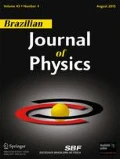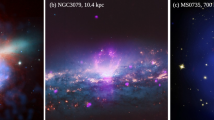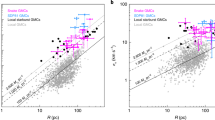Abstract
The majority of supermassive black holes in the Universe lie dormant and starved of fuel. These hidden beasts can be temporarily illuminated when an unlucky star passes close enough to be tidally disrupted and consumed by the black hole. Theorists first proposed in 1975 that tidal disruption events should be an inevitable consequence of supermassive black holes in galaxy nuclei and later argued that the resulting flare of radiation from the accretion of the stellar debris could be a unique signpost for the presence of a dormant black hole in the center of a normal galaxy. It was not until over two decades later that the first convincing tidal disruption event candidates emerged in the X-rays by the ROSAT All-Sky Survey. Since then, over a dozen total candidates have now emerged from searches across the electromagnetic spectrum, including the X-rays, the ultraviolet, and the optical. In the last couple of years, we have also witnessed a paradigm shift with the discovery of relativistic beamed emission associated with tidal disruption events. I review the census of observational candidates to date and discuss the exciting prospects for using large samples of tidal disruption events discovered with the next-generation of ground-based and space-based synoptic surveys to probe accretion disk and/or jet formation and black hole demographics.




Similar content being viewed by others
References
A.M. Beloborodov et al., MNRAS 259, 209 (1992)
E. Berger et al., ApJ. 748, 36 (2012)
J.S. Bloom et al., Science 333, 203 (2011)
G.C. Bower, ApJ. 732, L12 (2011)
G.C. Bower et al., ApJ. 763, 84 (2013)
D.N. Burrows et al., Nature 476, 421 (2011)
N. Cappelluti et al., A&A 495, 9 (2009)
B. Cenko et al., ApJ. 753, 77 (2012)
P. Esquej et al., A&A 489, 543 (2008)
S. Gezari et al., ApJ. 653, L25 (2006)
S. Gezari et al., ApJ. 676, 944 (2008)
S. Gezari et al., ApJ. 698, 1367 (2009)
S. Gezari et al., ApJ. 720, L77 (2010)
S. Gezari et al., Nature 485, 217 (2012)
S. Gezari et al., ApJ. 766, 60 (2013)
D. Giannios, B.D. Metzger, MNRAS. 416, 2102 (2011)
J. Guillochon, E. Ramirez-Ruiz. in press (arXiv:1206:2350) (2012)
M. Kesden. PhysRevD. 85, 4037 (2012)
S. Kobayashi et al., ApJ. 615, 855 (2004)
A.J. Levan et al., Science 333, 199 (2011)
G. Lodato, E.M. Rossi, MNRAS 410, 359 (2011)
P.W. Maksym et al., ApJ. 722, 103 (2010)
N. Stone, A. Loeb, MNRAS. 422, 1933 (2012)
N. Stone, R. Sari, A. Loeb, in press (arXiv:120.3374) (2012)
L. Strubbe, E. Quataert, MNRAS 400, 207 (2009)
S. van Velzen et al., ApJ. 741, 73 (2011)
S. van Velzen et al., A&A 552, 5 (2013)
B.A. Zauderer, Nature 476, 425 (2011)
Author information
Authors and Affiliations
Corresponding author
Rights and permissions
About this article
Cite this article
Gezari, S. Tidal Disruption Events. Braz J Phys 43, 351–355 (2013). https://doi.org/10.1007/s13538-013-0136-z
Received:
Published:
Issue Date:
DOI: https://doi.org/10.1007/s13538-013-0136-z




